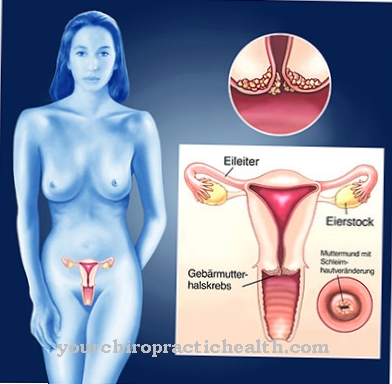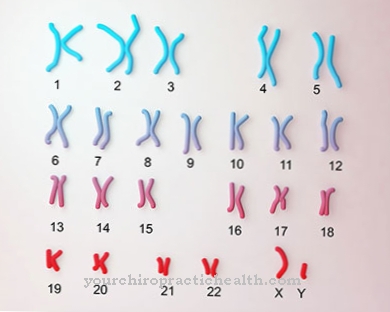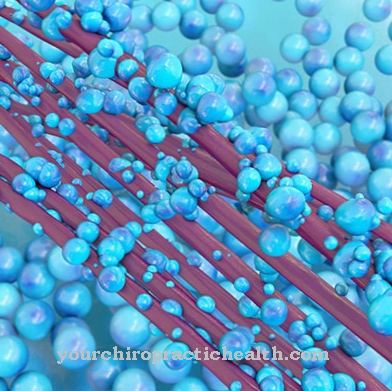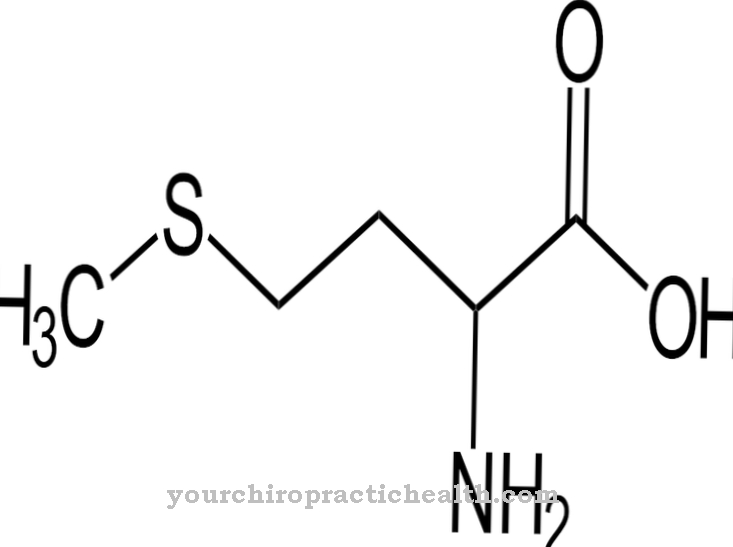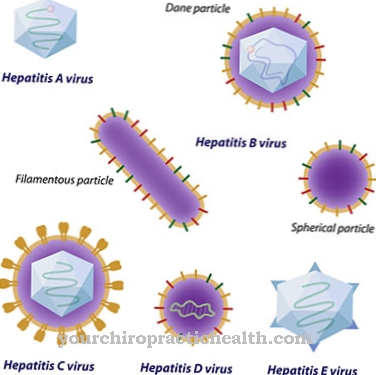The designation Palmar flexion is only used on the human body to move the hand. She is involved in many everyday and sporting movements.
What is palmar flexion?

The palmar flexion, like its countermovement, the dorsiflexion, is a movement that takes place in the wrist. The term 'flexion' ('flexion'), which is otherwise often used in other joints, is given a direction as an addition in this case.
Palmar is derived from the anatomical name 'Palma manus' ('palm'). The palmar flexion is accordingly a flexion that runs in the direction of the palm. The palm approaches the forearm. The movement takes place in the wrist, as the proximal carpal row, as a convex joint partner in the socket of the spoke, rotates around an imaginary axis of movement that runs across the joint.
The amplitudes of movement for palmar flexion and dorsiflexion are approximately the same, but depend on the position of the fingers. With the middle and end joints extended, palmar flexion typically reaches 85 °. With a flexion it is about 20 ° - 30 ° less. This has to do with the fact that the finger extensors, whose tendons run along the back of the hand and the back of the fingers, have almost exhausted their extension options due to flexion and limit further movement.
Function & task
The position of the fingers also plays an important role in the numerous activities in everyday life and in sports in which palmar flexion is involved. The force development that only arises from palmar flexion is significantly less with flexed fingers than with stretched fingers.
For this reason, racket position and technical execution are important in punch sports such as tennis, squash and badminton. When performing forehand and smashing strokes, the force is generated from the combination of palmar flexion and supination (outward rotation) or pronation (inward rotation) if performed correctly.
In the event of a blow or volleyball game, the finger joints are stretched and the full development of power is achieved by explosively folding down the hand. This is the main component in the acceleration of the ball, other movements only have an additional function.
The same fact can also be represented in everyday activities. especially when gripping, holding and transporting objects. Whenever a relatively large amount of force is needed to hold something, the so-called functional position of the hand is used.
While the fingers are firmly closed around the object, the wrist is set in a slight dorsiflexion, as the efficiency of the finger flexors is stronger.
The situation is different when light objects, for example when eating, are picked up and brought to the mouth. Here, palmar flexion is used as an important component because it brings the hand closer to the object and the mouth.
The functional position of the hand with the slight dorsiflexion can be broken through conscious processes. A typical activity where this happens is the uppercut in boxing. The momentum that comes from the shoulder and elbow joint is transmitted to the opponent via the wrist, which is fixed in the palmar flexion, without great loss of strength.
You can find your medication here
➔ Medicines for muscle painIllnesses & ailments
Injuries that can negatively affect palmar flexion include any fracture in that area. The distal radius fracture is the most significant and affects all movements of the wrist. Usually this trauma is treated surgically or conservatively, which in both cases is accompanied by a temporary immobilization. As a result, movement restrictions and muscle atrophies occur, which significantly impair hand function. Although the negative effects on dorsiflexion are greater, the functions of palmar flexion are also affected.
Tendonitis is a typical overload syndrome that often affects people who make monotonous movements or holding work on the forearm muscles over long periods of time. Affected are the finger extensors and flexors, the long tendons that stretch from the forearm over the wrist to the end links of the fingers. The main symptom is acute pain during use and the stretching of the affected muscles with a reactive protective behavior. If the extensors of the fingers are affected, not only finger flexion but also palmar flexion is impaired.
The active palmar flexion can be reduced or even fail completely if the nerve structures supplying it are damaged. In this case it is the median nerve. Injuries to the upper arm or near the elbow can lead to such a nerve lesion. Conversely, the so-called drop hand, which arises as a result of damage to the [[radial nerve [[[], is characterized by the fact that the hand cannot actively be brought out of palmar flexion.
All other neurological diseases and trauma in which flaccid paralysis of the arm and hand muscles can occur also affects the palmar flexors. These conditions include injuries to the spinal cord at the level of the cervical spine as well as polyneuropathy.
A stroke often has exactly the opposite consequences. The spastic pattern of the hand that often develops has the combination of palmar flexion, pronation, and flexion of all finger joints as components. With severe hypertension, the affected people are unable to open their hands and extend and raise their arms. Massive, irreversible contractures develop.
Chronic polyarthritis (rheumatism) is an autoimmune disease that primarily affects the hand and fingers in the early stages. This progressive disease directly attacks the joints, which are increasingly being destroyed. The following dismantling and remodeling processes lead to impairment of all movements of the hand and fingers. This can result in excessive mobility and stiffening in the joints.



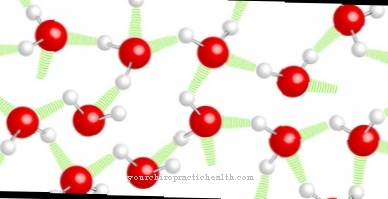

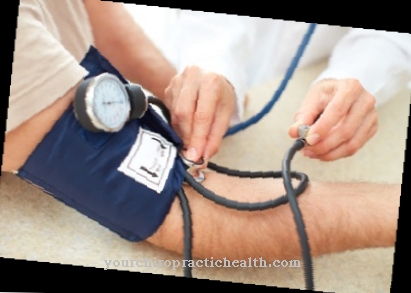
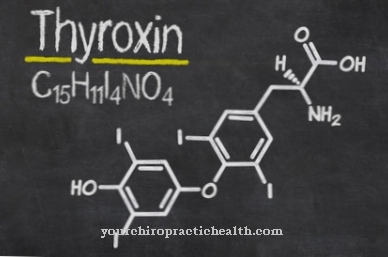

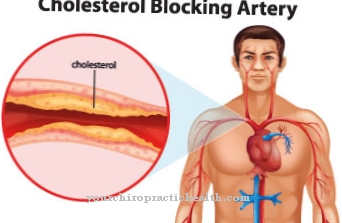
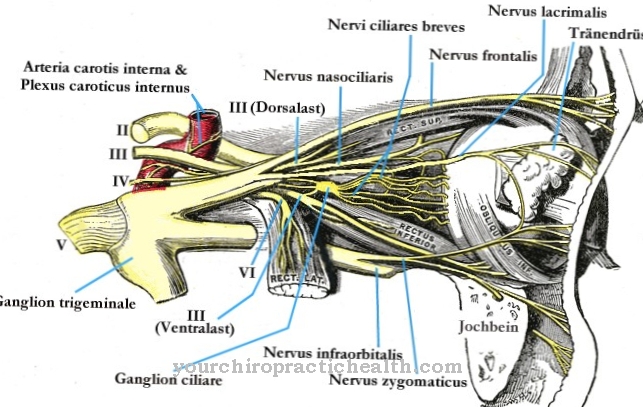
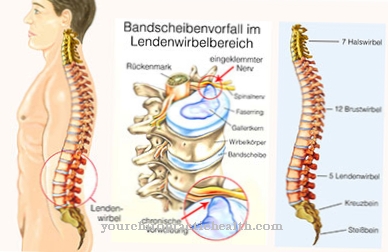


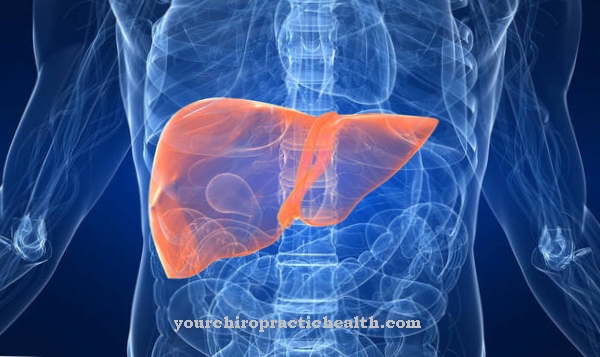
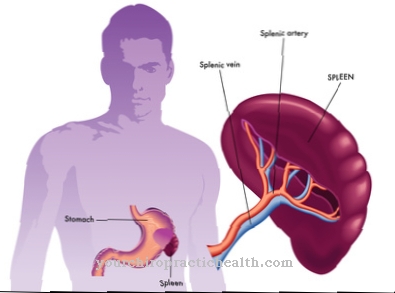
.jpg)



